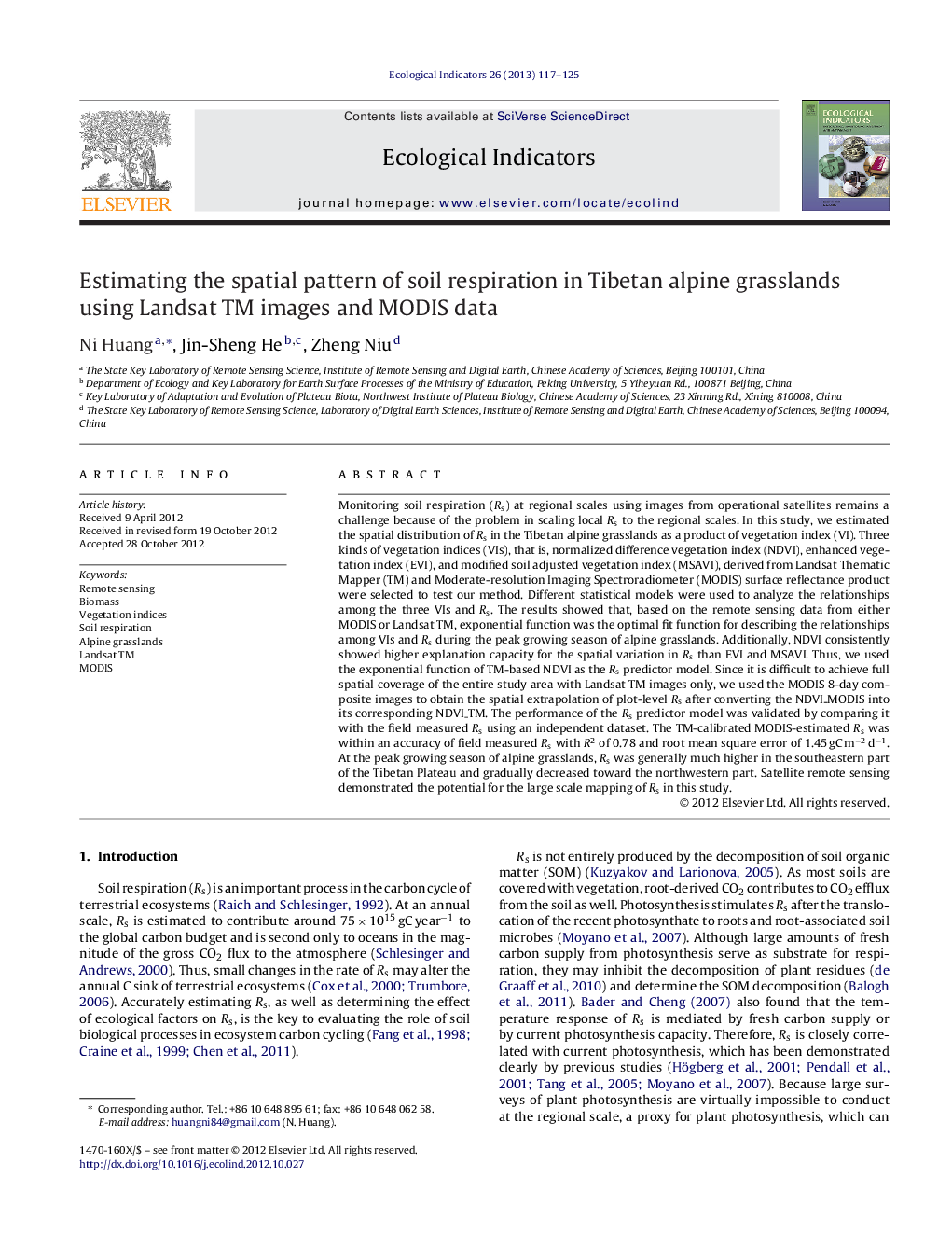| کد مقاله | کد نشریه | سال انتشار | مقاله انگلیسی | نسخه تمام متن |
|---|---|---|---|---|
| 4373569 | 1617174 | 2013 | 9 صفحه PDF | دانلود رایگان |

Monitoring soil respiration (Rs) at regional scales using images from operational satellites remains a challenge because of the problem in scaling local Rs to the regional scales. In this study, we estimated the spatial distribution of Rs in the Tibetan alpine grasslands as a product of vegetation index (VI). Three kinds of vegetation indices (VIs), that is, normalized difference vegetation index (NDVI), enhanced vegetation index (EVI), and modified soil adjusted vegetation index (MSAVI), derived from Landsat Thematic Mapper (TM) and Moderate-resolution Imaging Spectroradiometer (MODIS) surface reflectance product were selected to test our method. Different statistical models were used to analyze the relationships among the three VIs and Rs. The results showed that, based on the remote sensing data from either MODIS or Landsat TM, exponential function was the optimal fit function for describing the relationships among VIs and Rs during the peak growing season of alpine grasslands. Additionally, NDVI consistently showed higher explanation capacity for the spatial variation in Rs than EVI and MSAVI. Thus, we used the exponential function of TM-based NDVI as the Rs predictor model. Since it is difficult to achieve full spatial coverage of the entire study area with Landsat TM images only, we used the MODIS 8-day composite images to obtain the spatial extrapolation of plot-level Rs after converting the NDVI_MODIS into its corresponding NDVI_TM. The performance of the Rs predictor model was validated by comparing it with the field measured Rs using an independent dataset. The TM-calibrated MODIS-estimated Rs was within an accuracy of field measured Rs with R2 of 0.78 and root mean square error of 1.45 gC m−2 d−1. At the peak growing season of alpine grasslands, Rs was generally much higher in the southeastern part of the Tibetan Plateau and gradually decreased toward the northwestern part. Satellite remote sensing demonstrated the potential for the large scale mapping of Rs in this study.
Figure optionsDownload as PowerPoint slideHighlights
► NDVI showed good relationship with belowground biomass of alpine grasslands.
► NDVI showed good relationship with soil respiration (Rs) of alpine grasslands.
► Combination of MODIS and TM data demonstrated potential for estimating regional Rs.
Journal: Ecological Indicators - Volume 26, March 2013, Pages 117–125